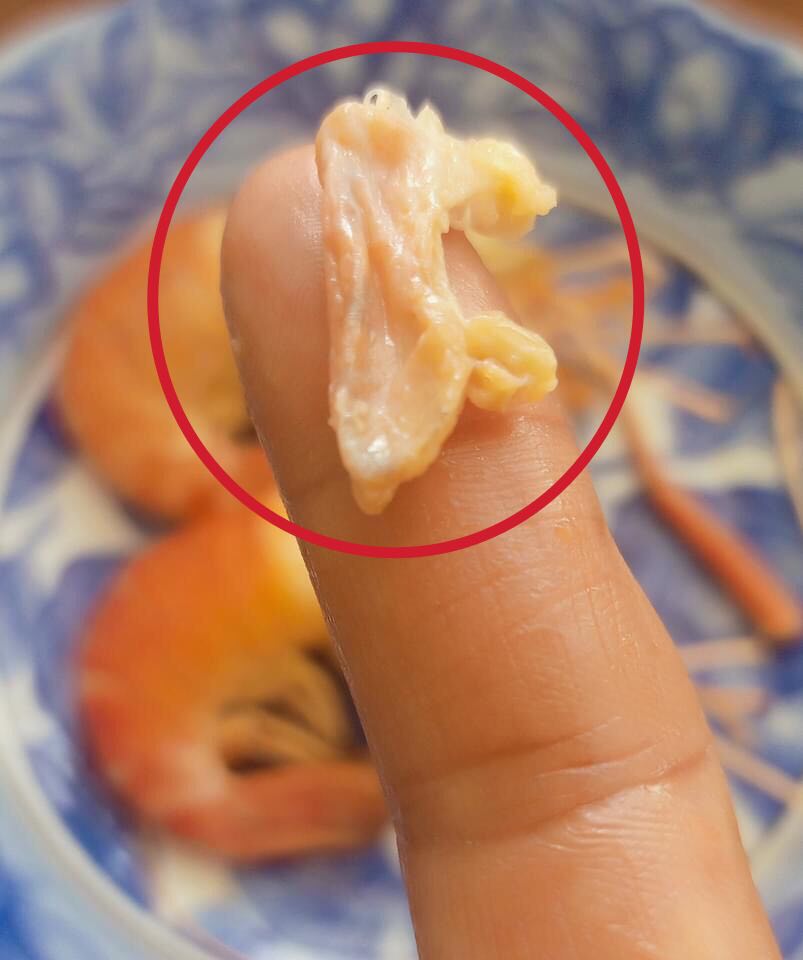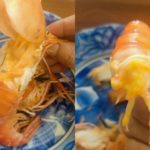A recent post on the ‘Yêu Bếp (Esheep Kitchen Family)’ Facebook group caught the attention of its members. The post, shared by Facebook user Nguyet Nguyen, focused on a unique topic: shrimp intestines and roe. In just two hours, the post garnered over 2,000 likes and sparked numerous comments and shares.

The post about shrimp intestines and roe sparked a lot of interest. (Screenshot)
Many people are unsure about the best way to peel and prepare shrimp to fully enjoy its intestines and roe. Therefore, it’s essential to first understand the anatomy of this crustacean.
Let’s delve deeper into the world of shrimp intestines and roe through the insightful post shared by Ms. Nguyet.

The shrimp used in the post is of medium quality, with approximately 20 shrimps per kg, priced at 150,000 VND/kg.
First, let’s enhance our knowledge about shrimp. Scientifically, shrimp roe, similar to crab roe, houses the reproductive cells. In shrimp, the roe is concentrated in the head region. In males, it comprises the entire system for producing sperm to ensure the continuation of the species. For females, the roe is their ovaries. During the breeding season, mature eggs descend into the female shrimp’s abdomen/apron, where they are fertilized and protected for a period before being released into the external water environment to hatch.
Now, let’s talk about shrimp intestines. Similar to the shrimp roe, the intestines are also located in the head region, tucked inside a tiny sac-like stomach directly connected to the digestive tract (as indicated by the black line on the shrimp’s back, extending towards the tail).


Similar to wild and farmed fish, the stomach of wild river shrimp is usually small, and their intestines are barely noticeable. However, the intestines of farmed shrimp are more visible, appearing as a dark-colored mass in the head region. When cooked, this mass hardens and can be easily spotted inside the tiny stomach sac, resembling the tip of a small chopstick.
Unlike the intestines, shrimp roe boasts a vibrant yellow or orange color and a rich, fatty flavor. The deeper the green color of the shrimp’s shell, the more attractive the color of its roe. As with durian, some people find the smell of shrimp roe pleasant, while others find it unappealing.


Left: Roe of smaller shrimp tends to be pale yellow. Right: Skillfully peeled shrimp with intact roe.
Ms. Nguyet, a resident of Vĩnh Long in the Mekong Delta region, also known for its abundant shrimp supply, particularly in areas with brackish water like Bến Tre, Cà Mau, and Kiên Giang, shared her expertise on the subject. She added, “I’m an expert at grilling and peeling shrimp for others, especially at parties. I take pride in skillfully peeling shrimp, ensuring the roe remains intact and the meat untouched.”


Remember to properly peel and prepare shrimp before enjoying steamed or grilled dishes to get the most out of your culinary experience!
According to ‘Pháp luật và bạn đọc’
Are You Sure You Can Distinguish Between Bricks and Shrimp Waste?
Everyone knows that shrimp roe is edible, but what about its waste? Can you differentiate between the two? If not, then read on to discover how to distinguish between the roe and the waste.


































